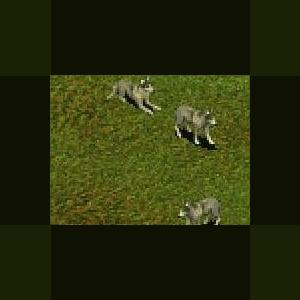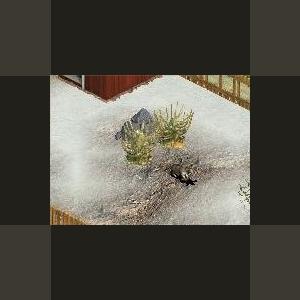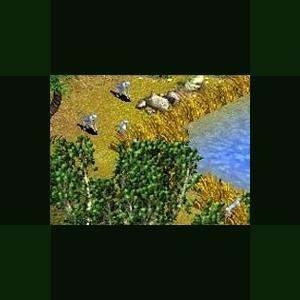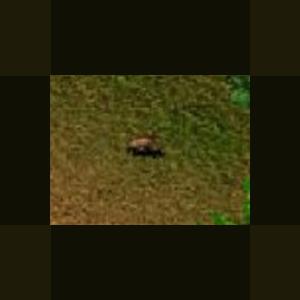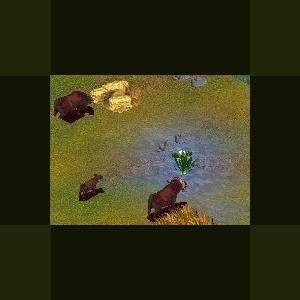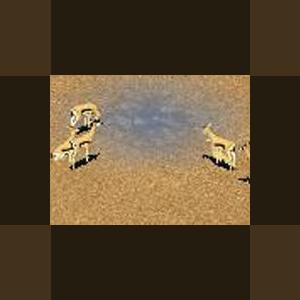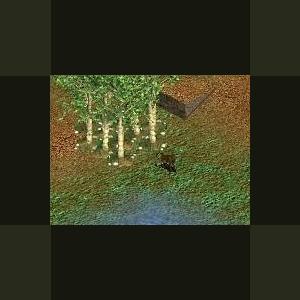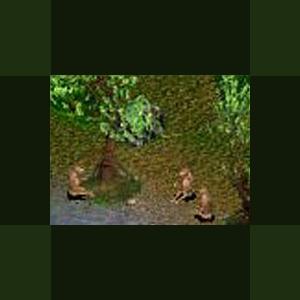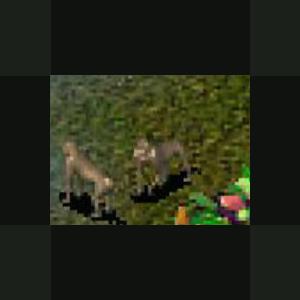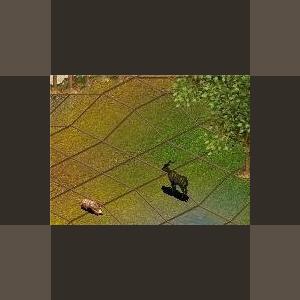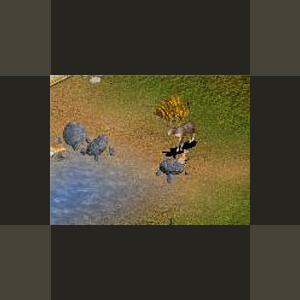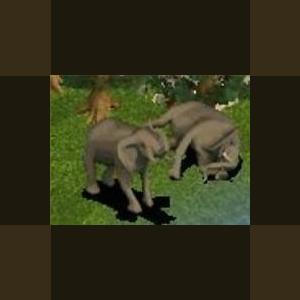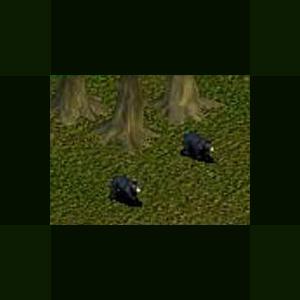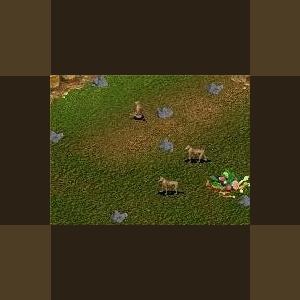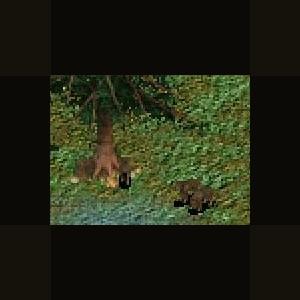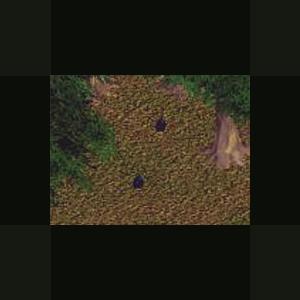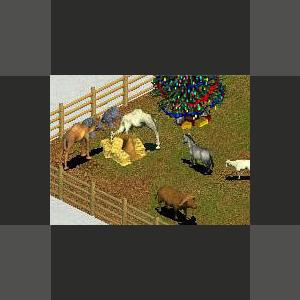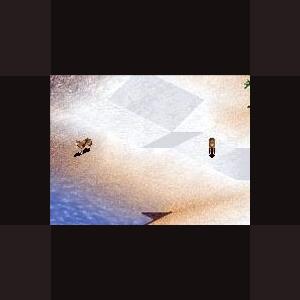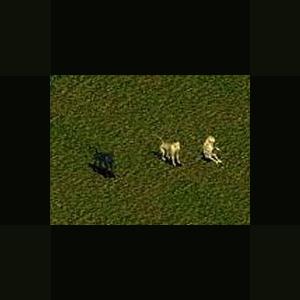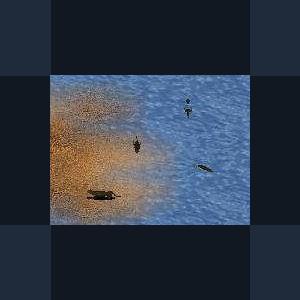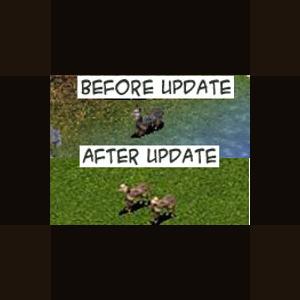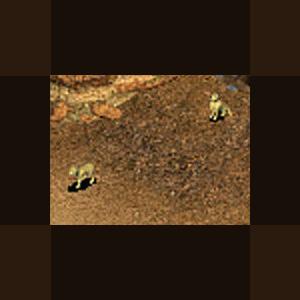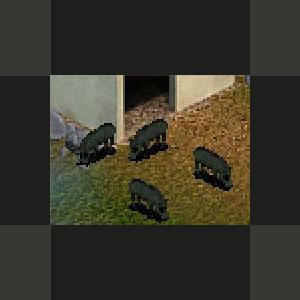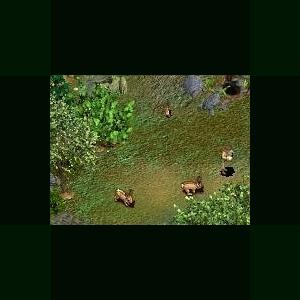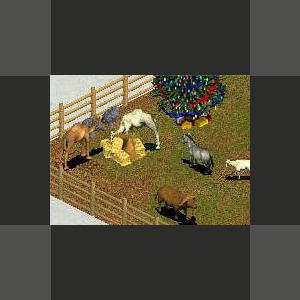279 files
-
Coyote by LAwebTek
By Guest
Coyote
Author: LAwebTek
The name coyote is a Spanish alteration of the original Aztec name coyotl. The Latin name Canis latrans, meaning barking dog, was given to it by Thomas Say, who published a description of the species in 1833. Since 1967, its official name in Canada, in both English and French, has been coyote. In some parts of Canada coyotes are called "brush wolves." Wolves are much larger and characteristically hunt in packs.
Slimmer and smaller than the wolf, the male coyote weighs from 9 to 23 kg, has an overall length of 120–150 cm (including a 30–40 cm tail), and stands 58–66 cm high at the shoulder. The female is usually four-fifths as large.
The coyote's ears are wide, pointed, and erect. It has a tapering muzzle and a black nose. Unlike most dogs, the top of the muzzle on coyotes forms an almost continuous line with the forehead. The yellow, slightly slanting eyes, with their black round pupils, give the coyote a characteristic expression of cunning. The canine teeth are remarkably long and can inflict serious wounds. The neck is well furred and looks oversized for the body. The long tongue often hangs down between the teeth; the coyote regulates its body temperature by panting.
The paw, more elongated than that of a dog the same size, has four toes with nonretractable claws. The forepaws show a rudimentary thumb, reduced to a claw, located high on the inner side. The claws are not used in attack or defence; they are typically blunted from constant contact with the ground and do not leave deep marks.
The fur is generally a tawny grey, darker on the hind part of the back where the black-tipped hair becomes wavy. Legs, paws, muzzle, and the back of the ears are more yellowish in colour; the throat, belly, and the inside of the ears are whiter. The tail, darker on top and lighter on the underside, is lightly fawn-coloured towards the tip, which is black.
The coyote's fur is long and soft and well suited to protect it from the cold. Because it is light-coloured in winter and dark in summer, it blends in well with the seasonal surroundings.
Like all Canidae, the coyote has, at the root of the tail, a gland that releases a scent. Such glands also exist on other parts of the body. Scent glands often become more active when the animals meet. The coyote's urine has a very strong smell and is used to mark out its territory. Trappers use the secretions when they set traps to attract the coyote.
European settlers found the coyote on the plains, prairies, and deserts of central and western North America. It appeared to prefer open or semi-wooded habitats. However, about the turn of the century, the coyote began a dramatic range expansion that is still in progress.
In Canada, the coyote still inhabits its traditional habitats, the aspen parkland and short- and mixed-grass prairie in the three prairie provinces. However, it has spread north into the boreal forest, west into the mountains, and east into Ontario, Quebec, and the Atlantic provinces. The progress of this dramatic "invasion" has been carefully charted; for example, coyotes established themselves in Ontario about the turn of the century, in Quebec in the 1940s, and in New Brunswick and Nova Scotia in the 1970s. Most astonishing of all, coyotes have recently been discovered in western Newfoundland, apparently having crossed on the ice from Nova Scotia.
The reasons for the coyote's expansion are not fully understood but probably include several conditions created by people: the clearing of forests, provision of carrion from domestic livestock, and the removal of the wolf. The mosaic of grassy fields, brush, and woodlots created by farming areas once covered with unbroken forest has provided attractive habitat for the coyote, as well as several other species like the red fox and raccoon. The coyote has learned to scavenge the carcasses of domestic livestock, much as it still scavenges the carrion left by wolves, where the two species occur together. The removal of the wolf in some areas has meant more to coyotes than the absence of a feared predator. It has meant less competition for many prey animals. For example, in winter, when snow conditions are right, coyotes can themselves kill large ungulates (hoofed mammals), such as deer, that multiply in the absence of wolves. Also, in hard winters, these swollen deer populations run out of food, the deer die of starvation, and the resident coyotes enjoy a food bonanza.
Like the wolf, the coyote's best known trait is its yelping and howling cry, a sequence of high-pitched, ear-piercing bayings. The coyote can also bark, growl, wail, and squeal. Although often silent in daytime, it may make itself heard at any time from sunset to sunrise, and especially at dusk and dawn.
Should there happen to be several coyotes in the same vicinity, the howling of one triggers that of the others, resulting in an impressive concert. Two coyotes howling in unison can create the illusion of a dozen or more. The coyote can also sound farther away than it is.
Scientists are intrigued by the coyote's howling, which seems to be a means of communication. The cry invariably brings a reply, then a sort of commentary followed by another prolonged cry, and finally a volley of raucous yelpings. Is it a cry for food, for a mate, or a proclamation of its territorial claims? Is it just an expression of joy at being alive or of sociability? The coyote is fond of playing with other coyotes, even with its prey before devouring it.
The coyote's senses of hearing and smell are so well developed that a sudden odour or noise can make it change its course in mid-step. Its agility in this respect is incredible, perhaps unique in the animal kingdom.
The coyote is a remarkably hard runner, galloping along at 40km per hour, but capable of reaching 64km per hour. Greyhounds, well known for their speed in running, can catch up with coyotes, but may require quite a long time to do so. Should the need arise, the coyote can swim well.
Coyotes appear to be monogamous, and couples may remain together for several years. Both sexes can breed at one year of age under good conditions, although both sexes usually breed somewhat later in life. During the mating season, males solicit the females' favours. The mating takes place mainly during February-March; gestation lasts from 60 to 63 days.
The coyote uses a den for the birth and early care of its cubs. It may be located at the base of a hollow tree or in a hole between rocks, but most often consists of a burrow in the soil. The coyote prefers to den on the banks of a stream or the slopes of a gorge and usually chooses a concealed spot. It often enlarges an abandoned marmot or badger burrow. The female may prepare alternative lodgings to enable her family to move to another refuge should trouble occur. Earth, pushed toward the entrance, is piled up onto a fan-shaped heap, which the animal skirts when going in or out. The same shelter may be used for several years.
Before the female gives birth, or "whelps," the den is thoroughly cleaned. On average, she bears three to seven pups, covered with fine brown fur, whose eyes remain closed for the first eight or nine days.
The male prowls around and brings food to the entrance as long as the pups do not venture from the den. The adults remove refuse as it accumulates. Weaning begins about one month after birth; thereafter the adults regurgitate half-digested food for the pups.
At about three weeks of age, the pups begin to romp around under the adults' watchful supervision, first inside the shelter, then outside. Should some enemy come too close, the adult utters a special warning bark, then lures the enemy away.
Later, the adults teach the pups how to hunt. When fall comes, the young coyotes may leave their parents to claim their own territory. If there is an abundant food supply, pups may stay with the adults to form packs, or clans.
Although primarily a flesh-eater, the coyote will eat just about anything available. Rabbits and hares are typically dietary staples, as are small rodents. Blueberries and other wild fruits are commonly eaten, in quantity, in summer and fall. Coyotes also eat insects, for example, grasshoppers, when they become available. Where coyotes and wolves live near each other, coyotes scavenge from wolf kills. Carrion from livestock and other sources is important too, especially in winter. Coyotes commonly prey on deer fawns in spring and summer; however, they may also prey on adult-sized deer and other large hoofed mammals during certain snow conditions in winter. Coyotes prey on domestic sheep when they are available, and may take beef calves and domestic poultry, too.
Coyotes have flexible social behaviour and adjust their hunting methods to the prey size and food sources available. Coyotes often hunt small prey animals singly, whereas they hunt large prey and defend large carcasses in groups.
The coyote has numerous foes. Chief among these are people; in some areas, 90% of the deaths of coyotes older than five months are caused by people, whether purposefully with guns, poison, and traps, or accidentally with vehicles and farm machinery. Wolves, black bears, mountain lions, and eagles all prey on the coyote. A Iynx can kill a coyote but will not attempt to do so unless the odds are in its favour.
Parasites and diseases can sometimes lead to death. Common are outbreaks of sarcoptic mange, an infestation by microscopic mites that causes thickening of the skin, loss of hair, and itching. Heartworm and hookworm are other common parasites of coyotes. Coyotes may also suffer from diseases such as distemper, canine hepatitis, rabies, and parvo virus.
2003 LAwebTek
Updated 2010-10-30
Just to save space with less in zip and smaller image.
Nothing new.
Updated 4 March 2011 by Fern to reinstate the file that was updated in 2009 with the following updates:
UPDATED July 25, 2009 to fix the following:
- Made small correction to the .uca
- As there are multiple coyotes with the same ztd name, the ztd name has been CHANGED from coyote.ztd to coyote_LA.ztd.
560 downloads
0 comments
Updated
-
Caribou by Hersheyqwert
By Guest
Caribou by Hersheyqwert
Recolor of the Reindeer. The animations has been deleted when they "flew" or anything else with the sparkles. They need snow, grey stone, grass, freshwater, and some dirt in their exhibits. They like a stable and some elevation. They like both the sage bush and tundra plants.
Updated 2010-10-30
Just to save space with less in zip and smaller image.
494 downloads
0 comments
Updated
-
Vervet Monkey by BigCatKeeper
By Guest
Vervet Monkey
Author: BigCatKeeper
The different types of vervets vary in colour, but generally the body is a greenish olive or silvery grey. The face, ears, hands, feet & tip of the tail are black, but an obvious white band on the forehead blends in with the short whiskers. The males are slightly larger than females and are easily recognized by their turquoise blue scrota.
The vervet is classified as a medium-sized to large monkey. Its tail is usually held up, with the tip curving down. Arms & legs are approximately the same length.
Vervet Monkey created by Bigcatkeeper
Thanks to Professorpaul for some infomation!
Updated 2010-11-11
Just to save space with less in zip and smaller image.
Nothing new.
335 downloads
0 comments
Updated
-
Paca by Ghirin
By Guest
Paca
Author: Ghirin
The paca (Agouti paca) is a large rodent native to the torpical portion of the Americas. The paca's fur is brown with up to four rows of horizontal white spots. The belly fur is white. These animals are solitary and nocturnal. They prefer to live near swiftly-flowing streams. Pacas are frequently preyed upon by large predators such as the jaguar and often swim to escape from danger.
Vital Statistics:
Weight - up to 18 kg.
Habitat - Tropical rainforests, prefers areas near fresh, running water.
Shelter - Simple tubular burrow.
Food -- Fruits, leaves, stems, roots.
Number of offspring - 1.
References:
Walker's Mammals of the World. Nowak, 1999.
Created by Ghirin 2004
Updated 2010-11-05
Just to save space with less in zip and smaller image.
Nothing new.
233 downloads
0 comments
Updated
-
Hereford Cow by Genkicoll
By Guest
Made by request, a special surprise for Menolly.
The Hereford breed was founded some two and one-half centuries ago as a product of necessity. Thrifty and enterprising farmers near Hereford in the County of Herefordshire, England, were determined to produce beef for the expanding food market created by Britain's industrial revolution. To succeed in Herefordshire, these early-day cattlemen realized they must have cattle which could efficiently convert their native grass to beef and do it at a profit.
There was no breed in existence at the time to fill that need, so the farmers of Herefordshire founded the beef breed that logically became known as Herefords. These early Hereford breeders molded their cattle with the idea in mind of a high yield of beef and efficiency of production, and so firmly fixed these characteristics that they remain today as outstanding characteristics of the breed.
Beginning in 1742 with a bull calf from the cow Silver and two cows, Pidgeon and Mottle, inherited from his father's estate, Benjamin Tomkins is credited with founding the Hereford breed. This was 18 years before Robert Bakewell began developing his theories of animal breeding. From the start, Mr. Tomkins had as his goals economy in feeding, natural aptitude to grow and gain from grass and grain, rustling ability, hardiness, early maturity and prolificacy, traits that are still of primary importance today.
Other pioneering breeders were to follow the Tomkins' lead and establish the world-wide renown for the Herefordshire cattle causing their exportation from England to wherever grass grows and beef production is possible.
Herefords in the 1700's and early 1800's in England were much larger than today. Many mature Herefords of those days weighed 3,000 pounds or more. Cotmore, a winning show bull and noteworthy sire, weighed 3,900 pounds when shown in 1839. Gradually, the type and conformation changed to less extreme size and weight to get more smoothness, quality and efficiency.
Source: http://www.ansi.okstate.edu/breeds/cattle/hereford/
*NOTE: 100% compatible with the prairie peafowl by Genki and the silkies made by Sundance.
Updated 2010-11-03
Just to save space with less in zip and smaller image.
Nothing new
465 downloads
Updated
-
Slender-horned Gazelle by Ghirin
By Guest
The slender-horned gazelle can survive in both stony and sandy desert. Its hooves are broadened for ease of travel over sand and it can obtain all of its water from the plants it eats, but will drink if water is available. Other adaptations for desert survival include the pale pelage and a special structure in the nose for cooling blood.
To avoid the heat of the day, slender-horned gazelles feed during the night and early morning. They range widely in search of food, usually traveling in herds of 3 to 10 animals.
References:
http://www.animalinfo.org/species/artiperi/gazelept.htm
http://www.livingdesert.org/sgslenderhornedgazelle.html
http://www.ultimateungulate.com/Artiodacty...leptoceros.html
Photograph:
http://www.mindspring.com/~zoonet/galleries/gazelle.htm
Updated 2010-11-06
Just to save space with less in zip and smaller image.
Nothing new.
298 downloads
0 comments
Updated
-
Arunachal Macaque by Ghirin
By Guest
Arunachal Macaque by Ghirin
Arunachal macaques live at high elevations in the eastern Himalayas.
The Arunachal macaque (Macaca munzala) is the most recent primate to be described by science. It is native to the Arunachal Pradesh region of India in the eastern Himalayan region. This macaque prefers living in the deep forest, but will come out to raid crops.
*Inspired by the Zoo Tycoon Brains Trust at the Zoo Tek Forums.
Reference: http://www.ncf-india.org/
http://news.bbc.co.uk/1/hi/sci/tech/4101001.stm
Created by Ghirin 2005
Updated 2010-10-30
Just to save space with less in zip and smaller image.
Nothing new.
377 downloads
0 comments
Updated
-
Pig-tailed Macaque by Ghirin
By Guest
The pig-tailed macaque (Macaca nemestrina) is named for its short tail which curves over it's rear in an inverted "C"- form. This macaque dwells in both primary and secondary forests of southeast Asia, including Burma, Malaysia, and Sumatra. Their habitat ranges from coastal wetland forest to dry moutain forest up to 1700 m.
Pig-tailed macaques are mainly fruit eaters, but will also accept seeds and invertebrates as food.
Updated 2010-11-05
Just to save space with less in zip and smaller image.
Nothing new.
246 downloads
0 comments
Updated
-
Rhesus Macaque by G2K
By Guest
Rhesus Macaque
Author: G2K
The Rhesus Macaque is among the most common monkeys in India. It is highly intelligent and has learned to adapt to almost all habitats. These range from near-desert to thick jungles, even mountains above the snowline at 2,500m. In India, where they are considered sacred and left unthreatened, they live successfully in agricultural and even urbanised areas. More than half of the Rhesus Macaques in Uttar Pradesh of Northern India live in cities and towns, raiding cultivated areas and rubbish dumps. In fact, they often become so fearless of humans that they can be a pest or even a danger to humans.
Updated 2010-11-05
Just to save space with less in zip and smaller image.
Nothing new.
297 downloads
0 comments
Updated
-
Mountain Nyala by Jordan
By Guest
Mountain Nyala by Jordan
Mountain Nyala
Large antelope of east Africa.
Updated 2010-11-03
Just to save space with less in zip and smaller image.
Nothing new.
321 downloads
0 comments
Updated
-
White-tail Deer by LAwebTek
By Guest
White Tailed Deer
Author: LAwebTek
http://www.zoo-tek.com/forums/index.php?download=184
Location:
Whitetail can be found in all of the US except California and Nevada; they can also be found in all southern provinces in Canada.
Common Name:
White-tailed Deer, Whitetail, or Virginia Deer
Scientific Name:
Odocoileus Virginianus
Physical Characteristics:
The Whitetail is a small to medium-sized deer. In the summer, the deer is tan or reddish brown and turns to a colder grayish brown in winter. The belly, throat, nose band, and eye ring, are white. The beautiful tail that gives the animal its name is 6-13 in (15-33 cm) with the underside white. The Whitetail will flash this warning when they sense danger and while they run.
Height: 27-45" (68-114 cm)
Weight: Male: 150-310 lb (68-141 kg); Female: 90-211 LB (41-96 kg).
Habitat and Range:
The Whitetail lives across North America on farmlands, brushy areas, woods, and even suburbs where they can find garden vegetation. Once nearly exterminated in the Northeast and Midwest of the US, the deer is now more abundant than ever. It has become the most plentiful game animal in eastern North America. This is due to the hunting restrictions and the decline in number of wolves and Mountain Lions, the Whitetail's main predators.
Behavior:
The Whitetail may be active at any time of the day, with dawn and dusk being the ideal time for sighting the animal. The deer is a beautiful runner with a bounding gate. It reaches top speeds of 35 mph (57km/h). This deer can make vertical leaps of 8.5 feet (2.6 m) and horizontal leaps of 30 feet (9 m). When the deer becomes frightened it snorts through its nose and slowly stamps its hooves, a signal that alerts other nearby deer to danger. When alarmed, the deer flags its tail, displaying a large, bright flash of white. This is the final signal of danger to all the deer and it also helps a fawn follow its mother in flight. The Whitetail does not usually travel in large herds, they are usually seen in groups of 2-10. The bucks and does herd separately most of the year, but in winter they may gather together, or "yard up." Sometimes 150 deer may group in one yard. Yarding keeps the trails passable during heavy snow and protects the deer from predators, there is always safety in numbers.
Breeding & Reproduction:
The mating season varies with the location. In the north, they will breed in November and in the southern areas they usually begin in January or February. The Whitetail is less polygamous than other deer, usually a bucks mates with only a few doe. A young doe bred for the first time usually has one fawn after a gestation of 6.5 months. Thereafter she will have twins and occasionally triplets if resources are abundant.
Care for Young:
Fawns stay with their mother into the fall or winter. The fawns are spotted and can walk within a few hours of birth, but they will remain hidden in tall grasses or brush, waiting silently and still for their mother to return and feed them. The young blend in well with most surroundings because their coats are speckled with white. They begin to lose this camouflage after 9 months. The male fawn will begin growing antlers after several months. A doe and her two-year old fawns is a common sight and easy to identify. However, the doe generally drives off her young before giving birth to another pair.
Diet:
The Whitetail grazes on most green plants, including aquatic ones in the summertime. In autumn, it will find acorns, other nuts, and corn. During winter, it browses in the woods, eating the bark off trees, including the twigs and buds of viburnum, birch, maple, and other conifers.
Programming by LAwebTek
Updated 2010-11-11
Just to save space with less in zip and smaller image.
Nothing new.
732 downloads
0 comments
Updated
-
North African Elephant by Ghirin
By Guest
North African Elephant
Author: Ghirin
http://www.zoo-tek.com/forums/index.php?download=626
The North African Elephant inhabited the area north of the Sahara Desert until about the 4th century A.D., when the animals were exterminated due to over hunting and loss of habitat. This is the elephant used by Hannibal during his attack on Rome. These elephants were also used by the Romans in the arena. These elephants are the same species as the Savannah Elephant, but adapted to the Mediterranean climate of northern Africa
Created by Ghirin 2003
Updated 2010-11-04
Just to save space with less in zip and smaller image.
Nothing new.
381 downloads
0 comments
Updated
-
Sun Bear by Ghirin
By Guest
Sun Bear
Author: Ghirin
The sun bear (Ursus malayanus, Helarctos malayanus) is the smallest species of living bear. It is native to the forests of Southeast Asia, including China, Thailand, Malaysia, Indonesia, and Vietnam. These bears are excellent climbers and spend the day sleeping and sunbathing in trees; they hunt at night.
Sun bears have black fur with a characteristic light-colored mark on the chest. The soles of their feet are free of fur to help in climbiing and they have large, curved claws for climbing, openning insect nests, and defense. These bears also use their long canine teeth to tear open trees to get at the insects hidden inside.
Sun bears eat a wide variety of foods, including insects, friut, honey, eggs, and small vertebrates.
They are solitary animals, with the only regular social group being that of mother and cubs.
Created by Ghirin 2003
Updated 2010-11-06
Just to save space with less in zip and smaller image.
Nothing new.
373 downloads
0 comments
Updated
-
Proboscis Monkey by Jordan
By Guest
Proboscis Monkey by Jordan
Proboscis Monkey
Large-nosed rain forest monkey of Borneo
Updated 2010-11-05
Just to save space with less in zip and smaller image.
Nothing new.
322 downloads
0 comments
Updated
-
Raccoon Dog by Ghirin
By Guest
Raccoon dogs (Nyctereutes procyonoides) are considered by some authorities to be the most primitive members of the dog family. In appearance, they resemble raccoons. Raccoon dogs do display most of the characteristics of other canines; however, they cannot bark. They live in pairs or small family groups of the parents and their cubs. They prefer to live in moist, heavily forested regions and are omnivores.
Raccoon dogs are native to eastern Asia. The species has been introduced to western Eurasia by the fur industry and has become established in its new home.
In Japan, the raccoon dog is called tanuki and features in folks tales and traditional medicines.
Reference:
www.lioncrusher.com
Photograph:
http://www.aoba.sakura.ne.jp/~momoncyo/zoo/animal_raccoon_dog.htm
Created by Ghirin 2003
Updated 2010-11-05
Just to save space with less in zip and smaller image.
Nothing new.
411 downloads
0 comments
Updated
-
Siamang by Ghirin
By Guest
The siamang (Hylobates syndactylus) is the largest species of gibbon. They inhabit both primary and secondary forests and range from the Malay penninsula to Sumatra. The major portion of their diet is composed of leaves, but they aslo eat fruit, flowers, and a small amount of animal prey.
Siamangs, like other gibbons, are territorial. A pair establishs and defends a territory from others. They tolerate immature offspring in the family area until the offspring reach puberty; then the young leave to establish their own home territories.
Siamangs have loud calls. The male inflates his throat sac to scream a call while the female barks her calls.
References:
http://www.bbc.co.uk/nature/wildfacts/factfiles/344.shtml
Walker's Mammals of the World, Nowak, 1999
Photograph:
http://www.bbc.co.uk/nature/wildfacts/factfiles/344.shtml
Created by Ghirin 2003
Updated 2010-11-06
Just to save space with less in zip and smaller image.
Nothing new.
318 downloads
0 comments
Updated
-
Christmas Animals Part 2 by Ghirin
By Guest
Christmas animals part 2
White dromedary camels are one of the color varieties of dromedary camels.
They enjoy the company of other Chritmas Petting Zoo animals.
Sheep are one of the most valuable animals in the Middle East,
providing humans with meat, wool, and milk.
White Sheep enjoy the company of other Christmas Petting Zoo animals.
Updated 2010-10-30
Just to save space with less in zip and smaller image.
Nothing new.
448 downloads
0 comments
Updated
-
Tibetan Fox by BigCatKeeper
By Guest
Tibetan Fox
Author: BigCatKeeper
The Tibetan fox lives in Tibet, the Sutlej Valley in northwest India, and the Mustang district in northern Nepal. They live in the uplands of its range.
They are small foxes, with an elongated muzzle. They are rusty yellow in colour, with grey on the sides of the body, and white on the face and under body. They have acute hearing. Their teeth are well-developed, especially the canines, which are longer than in most other foxes. They have dense fur to protect them from high winds.
The Tibetan fox eats mostly rodents. They live in burrows in rocks on the plateaus. The Tibetan fox lives in pairs which hunt together. Mating season is in February, and after a gestation period of 50-60 days, 2-5 kits are born in a den. There is little information on this fox species.
These foxes tend to avoid areas where humans live. They are trapped for their fur in Tibet, where hats are made from their pelts.
Tibetan Fox created by Bigcatkeeper
Idea from Professorpaul
Updated 2010-11-11
Just to save space with less in zip and smaller image.
Nothing new.
291 downloads
0 comments
Updated
-
Black & Gold Howler Monkey by Ghirin
By Guest
The black howler monkey (Alouatta caraya) is sometimes called the black-and-gold howler monkey due sexual dimorphism. The males have black fur, while females and young have gold- to olive-colored fur. These monkeys are native to the tropical hardwood forests of South America.
Black howler monkeys live in large family groups. The females tend to stay with their natal groups while the males disperse to other groups.
*Inspired by the Zoo Tycoon Brains Trust at the Zoo Tek Forums.
Reference:
LaValle, A. 2000. "Alouatta caraya" (On-line), Animal Diversity Web. Accessed February 19, 2005 at http://animaldiversi...tta_caraya.html.
Created by Ghirin 2005
Updated 2010-10-30
Just to save space with less in zip and smaller image.
646 downloads
0 comments
Updated
-
North American River Otter by Ghirin
By Guest
North American river otters (Lontra canadensis) are semi-aquatic members of the weasel family. They can be found in any location where both permanent access to food and clean, open water. While mainly thought of as inland animals, these otters can be found in coastal habitats such as estuaries.
North American river otters are usually solitary animals, but groups composed of a mother and her young are often seen exhibiting playful behaviors such as mud and snow sliding.
Like most otters, North American river otters are fish eaters.
*Inspired by the Zoo Tek Brains Trust at the Zoo Tek Forums
References:
Ellis, E. and T. Dewey. 2003. "Lontra canadensis" (On-line), Animal Diversity Web. Accessed June 24, 2004 at http://animaldiversity.ummz.umich.edu/site/accounts/information/Lontra_canadensis.html.
http://www.press.jhu.edu/books/walkers_mammals_of_the_world/carnivora/carnivora.mustelidae.lutra.html
http://www.lioncrusher.com
Created by Ghirin 2004
Updated 2010-11-04
Just to save space with less in zip and smaller image.
Nothing new.
743 downloads
Updated
-
Mainland Serow by LAwebTek
By Guest
Mainland Serow
Author: LAwebTek
The mainland or Asiatic serow (Nemorhaedus sumatraensis) ranges from the Himalayas of Nepal, north to Gansu and Anhui in China, and south to the Malay Peninsula and Sumatra. Their long, mule-like ears are narrow, pointed and tasseled, and usually longer than their short, black horns. Mainland serows have short beards, a long, heavy mane and less bushy tails than Japanese and Taiwanese serows. Coat color varies greatly by region, however the mainland serow is typically blackish-gray to reddish-brown.
Length and Shoulder Height
Adult length: 39-71 inches (100-180 cm)
Adult shoulder height: 28-43 inches (70-110 cm)
Weight
56-309 pounds (25-140 kg); mainland serows are much larger and heavier than Japanese and Taiwanese serows.
Life Span
Life span in the wild is unknown; serows live over 10 years in zoos.
Diet
Ungulates cannot manipulate food with their forelimbs, so their lips, teeth and tongues are modified to take food directly from the plant or ground and grind vegetation like a mill. Serows, like all Bovidae, are specialized herbivores called ruminants.
In the wild: Serows are predominantly browsers with selective food habits. They eat herbs, leaves of trees or shrubs, shoots, twigs and grasses.
At the zoo: Herbivore pellets, alfalfa, timothy grass hay and seasonal browse, some fruits and vegetables.
Reproduction
Mating takes place in fall or winter. After a gestation period of 200 to 230 days, a single kid weighing about 8 pounds (3.5 kg) is born during the months of May to September. The kid will reach full size and leave the mother’s territory at 12 months and become sexually mature by 3 years.
Life Cycle
Serows, especially males, are usually solitary but sometimes are found in pairs or family groups of up to seven. Both sexes mark territories by rubbing onto rocks and branches a secretion from their preorbital glands. The territory of a solitary individual may be only three acres (1.2 ha), while that of a family group may be up to 54 acres (22 ha).
Although they are less agile and move less rapidly than gorals, serows are sure-footed, clambering easily along well-defined trails on mountain slopes. They feed at dawn and dusk. During the heat of the day, they take shelter in favorite resting places among rocks, in caves, under overhanging rocks or cliffs, or in dense underbrush, hidden from predators such as bears, tigers and wolves. Their smell, vision and hearing are acute.
Resource Defenders
Serows are resource defenders and reflect the ancestral body plan of all Caprinae. Resource defenders are more primitive, tend to be solitary and territorial, and live in small areas of highly productive and diverse habitats which are easily defended. Fossil Caprinae dating back 35 million years closely resemble serows. During the ice ages, most Caprinae species increased in body and horn size, adapted to more severe climates and land forms, and became grazers, roaming over larger areas in cooperative herds. The more familiar goat antelope, the mountain goat Oreamnos americanus, may have evolved from serow-like ancestors in a glacial environment.
Fascinating Facts
Serows are the most primitive living Caprinae. Their fossils appear in the late Pliocene of 7 to 2 million years ago!
Serows can be aggressive and will attempt to fight off predators, even Asian black bears, with their dagger-like horns!
Serows will swim between the small islands near the Malay Peninsula!
2003 LAwebTek
Updated 2010-11-03
Just to save space with less in zip and smaller image.
Nothing new.
243 downloads
0 comments
Updated
-
Fennec Fox by Ghirin
By Guest
The fennec fox, smaller than a housecat, is the smallest of the foxes. This fox is commonly found in the desert areas of northern Africa and northern Arabia. It is able to withstand the extreme heat of the desert day by remaining submerged in a grass-lined burrow that may be up to 3 feet deep and 31 feet long. The fennec fox also has very large ears in proportion to its head. These large ears are useful for radiating heat, and may also help it locate its prey, especially rodents, lizards and insects. Fennec foxes also grub for roots and other plant foods. These plant foods may provide an important secondary source of water (primary being desert waterholes).
(Information and photograph from: www.pbs.org/sahara/wildlife/fennec1.htm.)
Created by Ghirin 2003
Updated 2010-11-03
Just to save space with less in zip and smaller image.
Nothing new
535 downloads
0 comments
Updated
-
Giant Forest Hog by BigCatKeeper
By Guest
Giant Forest Hog
Author: BigCatKeeper
http://www.zoo-tek.com/forums/index.php?download=162
The giant forest hog (Hylochoerus meinertzhageni) of Africa is probably the largest wild pig in the world. There are three subspecies. None is endangered, although the western forest hog Hylochoerus meinertzhageni ivoriernsis is considered vulnerable to population reduction. The other subspecies are fairly widespread throughout central Africa. Yet the giant forest hog was unknown to Western science until 1904. This shows that a large animal, even one which exists in good numbers, can remain undiscovered for many years.
Adult male specimens of the giant forest hog can reach over two meters in length and weigh up to about 275 kilograms. Unlike some other wild pigs which are nearly hairless, the giant forest hog is covered in dark black hair. The hair may thin with age, revealing the dark black skin underneath. When agitated the pig raises a mane of hair around the neck.
Giant forest hogs live in groups ("sounders") of up to twenty animals. Most of the time these groups comprise a female and up to three generations of her offspring. Usually there is only one adult male per group, and males often live alone. They live mostly on grass and other plant materials and are more herbivorous than other omnivorous wild pigs. They also dig or grub for food far less than other pigs.
Male giant forest hogs do not tolerate the company of other males. Their fights are noisy, violent, and often result in injuries to both participants. Curiously the males may charge each other and butt heads, rather like some species of sheep.
Forest hogs react fiercely to threats from other animals. Sometimes they even drive predators away from their kills. Forest hogs will attack humans if shot at. Natives report male hogs will attack without warning or provocation, presumably in defense of the group from potential danger. Despite its ferocity, the giant forest hog can be tamed fairly easily. It may prove a good candidate for domestication.
Giant Forest Hog created by Bigcatkeeper Thanks to Professorpaul1 for the idea!
Updated 2010-11-03
Just to save space with less in zip and smaller image.
Nothing new
338 downloads
0 comments
Updated
-
Rabbit by African Raptor
By Guest
Rabbit
Author: African Raptor
Just in time for Easter, a special creation from African Raptor. This adorable rabbit will charm your guests. Enjoy!
Updated 2010-11-05
Just to save space with less in zip and smaller image.
Nothing new.
658 downloads
0 comments
Updated
-
Christmas Animals Part 1 by Ghirin
By Guest
Christmas animals part 1
Oxen are large animals valued for their meat, hide, and milk.
They enjoy the company of other Christmas Petting Zoo animals.
Brown Dromedary camels are the typical "camel" color.
They enjoy the company of other Christmas Petting Zoo animals.
Donkeys have been domesticated for approximately 6000 years.
They enjoy the company of other of Christmas Petting Zoo animals.
Updated 2010-10-30
Just to save space with less in zip and smaller image.
Nothing new.
488 downloads
0 comments
Updated

